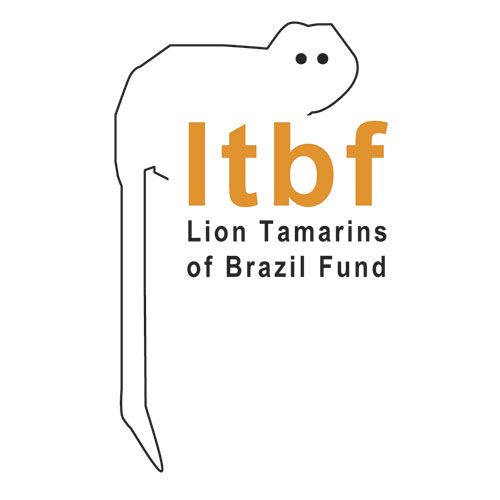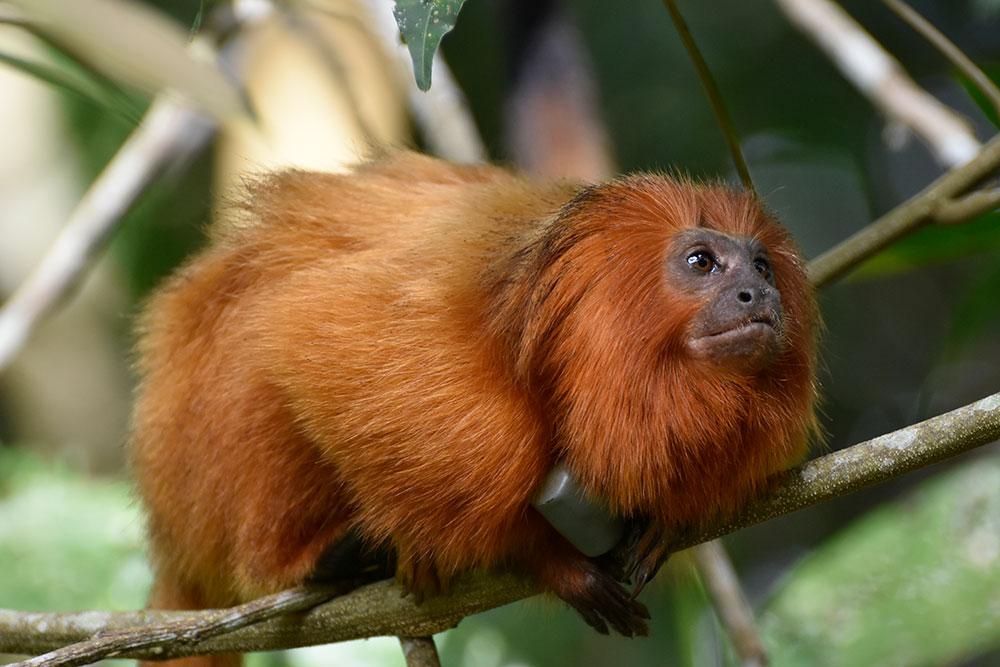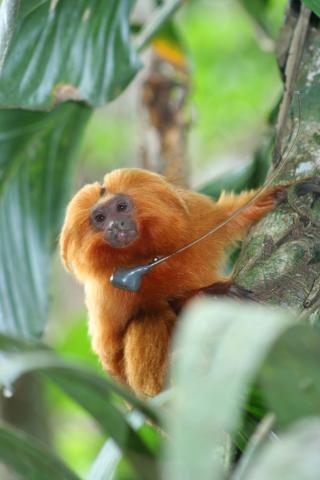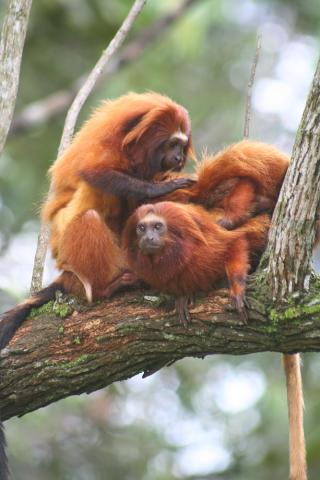Lion Tamarins of Brazil Fund

Field studies initiated in the late 1960s showed that their numbers had plummeted due to intensive logging and urban expansion – at the time they were estimated at less than 200! Concerned by this situation, the Rio de Janeiro Primatology Centre decided to take measures to save the species and increased captive breeding, while the Brazilian environmental agency IBAMA created the Poço das Antas biological reserve (1974) to protect the last intact biotopes. A collaboration with zoos abroad was soon put in place to ensure sufficient genetic diversity within the captive population, and before long an international conservation programme for the species saw the light of day.

In 1984 the first reintroductions occurred into the Poço das Antas Reserve. The Zoo de La Palmyre took part in this in 1992 when it sent a family of 3 golden lion tamarins born within its confines to the Brazilian reserve.
Up until 2000, about 150 golden lion tamarins were reintroduced into the reserve and into fragments of neighbouring private forests. At the same time family groups from small portions of isolated forest were translocated to another protected are: the Biological Reserve of Fazenda União.
Today scientists estimate the population at just over 3,700 individuals. Thanks to the success of the reintroductions and translocations, the Golden Lion tamarins could be saved from extinction, leading to the 2003 shift of the species from the “Critically Endangered” to the “Endangered” category on the International Union for Conservation of Nature’s Red List.
The program has also significantly contributed to the protection of 3,100 ha of forests within their historical range. However, the situation remains very fragile, as the population was recently hit by a devastating yellow fever epidemic that resulted in the death of many individuals.

Golden lion tamarin equipped with a transmitter © LTBF 
Golden lions tamarins © LTBF
Golden Lions tamarins remain globally threatened by the extreme fragmentation and limited size of the Atlantic forest meaning reintroductions are no longer possible. Hence, reforestation and the creation of corridors to restore the connectivity of the habitats, as well as translocations of groups (allowing to act on genetics and demographics) are now the best chances for the long-term survival of the species.
The Lion Tamarin of Brazil Fund (LTBF) collects funds from zoos housing tamarin lions in order to support conservation of the 4 species belonging to the Leontopithecus genus in Brazil: the Golden lion tamarin (Leontopithecus rosalia), the Black lion tamarin (Leontopithecus chrysopygus), the Golden-headed lion tamarin (Leontopithecus chrysomelas) and the Black-faced lion tamarin (Leontopithecus caissara). To this end, it finances behavioural and ecological studies, censuses, translocations, environmental education campaigns, reforestation measures and even the purchase of private land with the aim of securing and sustaining the tamarin lion habitat.